
Why do mice go in the engine bay? Other than, of course, to make our lives miserable. It’s true that it’s simply the result of their natural search for shelter and food, which our vehicles offered by the pound.
There is an explanation, though, why we’re seeing this problem more often now than ever before.
You see, cars used to be made entirely out of metal, plastic and glass. In the past 10-15 years, however, manufacturers have moved towards using more natural, biodegradable materials.
Soy, for example, is used in the production of cushion foam, interior carpeting and wire insulation. While great for the environment, these turned out to be irresistible to mice and a brand new source of headaches for car owners.
Table of Contents
Mouse Damage To Car and Engine Compartment
So, what does happen when mice start living in our car? You’ll surely start seeing the tell-tale signs of a mice infestation, as well as the damage they leave behind. Here are the most common ones:
- Nibbled plastic and padding
- Droppings, rubbish, footprints in and around the vehicle
- Nesting and possible reproducing
- Chewed-up wires leading to shortages
- Animal bacteria and dander in the air filter, leading to health hazards
- Debris and litter build-up in the engine compartment, sometimes leading to a choked-up engine
Repairing the mice damage in an automobile can cost anywhere between £600 -£2,000, depending on how bad the damage to the electrical wiring is. Mice will gnaw on your wires not for food but simply to keep their teeth sharp and in shape. What’s innocent fun for them can turn into an exhausting and expensive visit to the repair shop.
Expenses are just one side of the issue, however. Sharing an area with rodents instantly puts you at risk of attracting viruses and diseases such as the hantavirus, sole virus, salmonella, leptospirosis and others. These diseases are transmitted through dander and excrement particles you breathe in inside the car.
Learn: 6 Common Bugs in Cars and How to Get Rid of Them
It’s safe to say, if you notice any signs of mice setting up home in your car, take action immediately. The best course of action, of course, is prevention – take precautionary measures to keep mice out of the car engine compartment. Here’s how!
Learn: How to Get Rid of Mice in Your House
How to Keep Mice Out of Car Engine Compartment
The engine bay is the place you least want rodents nesting in – and, unfortunately, has the biggest appeal to mice. Not only is it warm, hidden and dark, but it’s also the place you’re least likely to bother them.
There’s not much you can do to change these conditions, but you can keep your car and engine compartment clean and sealed off like a fortress.
- Keep your car parked in a clean area. If your car is parked in a garage or a storage space with a rodent problem, it will be at risk. You can place mouse traps or use the scent of peppermint around your car to discourage mice from getting close to it.
- Be especially cautious in the winter and cold weather, as that’s the time your car engine compartment is most attractive to mice. Always check for rodents presence around the engine compartment before turning it on.
- Don’t keep food and packaging inside or near the car. Mice are exceptionally good at finding a food source, no need to make it easier for them! Sometimes all it takes is a ketchup packet to lure the mice into the car and, subsequently, into the engine compartment. Be wary of where you leave pet food or birdseed because mice and rats are known for
- Cut down any shrubbery nearby, or avoid parking your car near the greenery. Greenery offers a hiding place for mice and increases the odds of putting your car in the same postcode with a giant family of rodents!
- Use copper wire screens to cover the openings of your engine compartment. Mice and rats despise the taste of copper and will surely not gnaw on anything made out of it. Mice get into the engine compartment most often through the air ventilation system and evaporation drain tubes. It’s also possible for a factory fault to have misplaced an important plug and to have left an opening. Smaller mice could also sneak through the bonnet insulation and right into the engine compartment. One of the most popular entrance spots for mice is above the wheels. Disclaimer: Please consult a mechanic before sealing any openings to the engine compartment.
- Check for signs of mice regularly. That includes smells, sounds and popping up the bonnet occasionally to inspect the engine compartment for any signs of nesting, such as food stored in the air box.
- Get insurance that covers the cost of repairs. While it can never hurt to know how to keep mice out of car engine compartment, it’s even better to prepare for the worst.
- Book professional help. if anything else is not effective enough, think of hiring a professional mice control as the infestation might exceed. The experts will thoroughly look around, and check for nests and other signs. Then they will execute the most suitable treatment by using top-notch equipment.
How to Get a Mouse Out of Your Car Engine
Pop the hood and take a look
Start by popping the hood and carefully checking the engine area for any signs of mice. You’ll want to look out for droppings, chewed materials, or even nests. Be cautious, as mice can hide in tight spaces or get startled and jump out when disturbed.
Safely remove nests or debris
Put on some gloves and gently remove any nests or leftover food you come upon. Rodents can spread infections, hence it’s advisable not to handle anything directly. To prevent contamination, gather the trash in a sealed plastic bag and dispose of it correctly.
Set up humane traps
Set humane traps around your car to capture any mice still lurking there. These traps let you safely catch the mouse alive and release it far from your car. Check the traps routinely and move any mice you find.
Try rodent repellents for cars
Making sure that the mouse doesn’t return is crucial once it has left. Apply rat repellant made especially for automobile engines. These are available in spray, pouch, and ultrasonic device formats and are all safe to use in close proximity to engine components.
Since essential oils and peppermint have strong scents, mice don’t enjoy the natural substances used in many sprays. High-frequency sounds released by ultrasonic repellents irritate rats’ keen hearing, keeping them at a distance.
Seal off entry points
Check your engine for any crevices or cracks that the mouse could have entered through. Ventilation ducts, openings surrounding the engine block, and areas close to the wheels are examples of common locations. Mice cannot chew through materials like steel wool or copper mesh, so you can seal these places. Just take care not to obstruct any essential airflow. Seeking advice from a mechanic could be worthwhile if you’re unsure.
Check air filters and vents
Mice often sneak into cars through air filters or the ventilation system. Take these parts out and inspect them for any signs of damage or droppings. If you find any contamination, replace the filters to avoid any health risks from airborne particles.
Keep your car in regular use
Cars that are used regularly have a lower chance of becoming home to mice. Rodents will find your car less tempting if you try to start it and move it around frequently. Long stretches of time spent leaving your car parked make it more conducive for mice to live there.
Are you dealing with a pest infestation?
You don't have to be alone in the battle against pests. Hire a professional pest expert!
Call usFinal words
Mice will rarely go into a car that you regularly clean, maintain and use. They are more likely to look for vehicles that offer easy access and are close to a place they are already inhabiting, like an old garage/storage space or nearby shrubbery.
Remember, if your car is parked most of the time, that’s all the more reason to check up on it more often. Consider lifting your car on jack stands from galvanized steel (mice can’t climb steel since there’s nothing to latch on to) to ensure full protection.

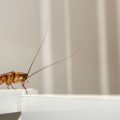



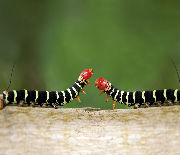
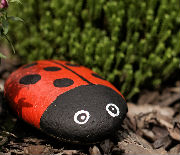
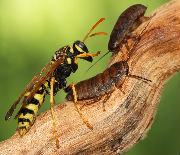
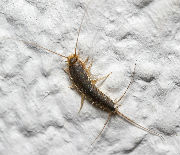
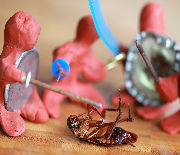
They eat the dryer sheets i put in engine comp. Got free from sticky pad but left lot of fur in it